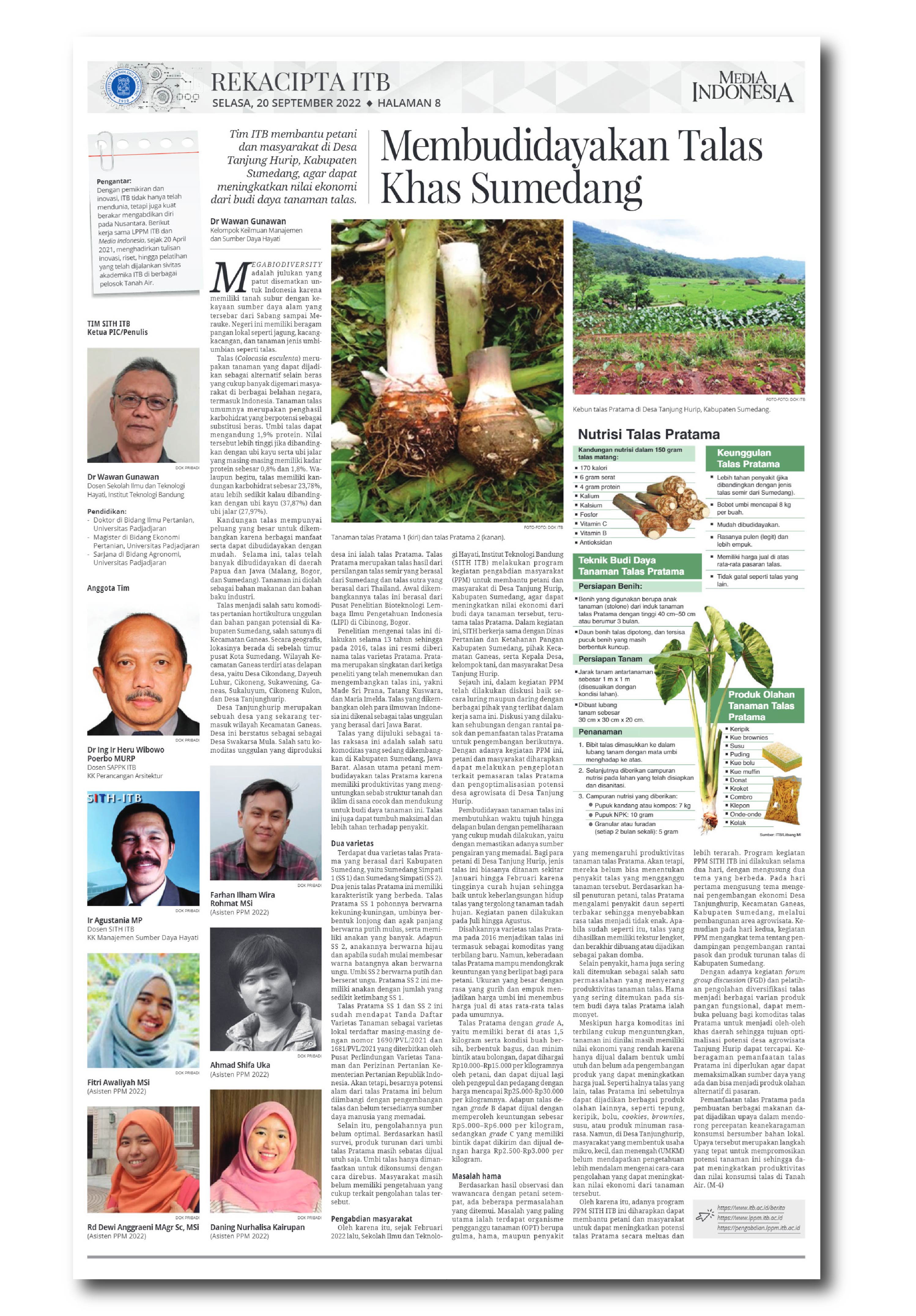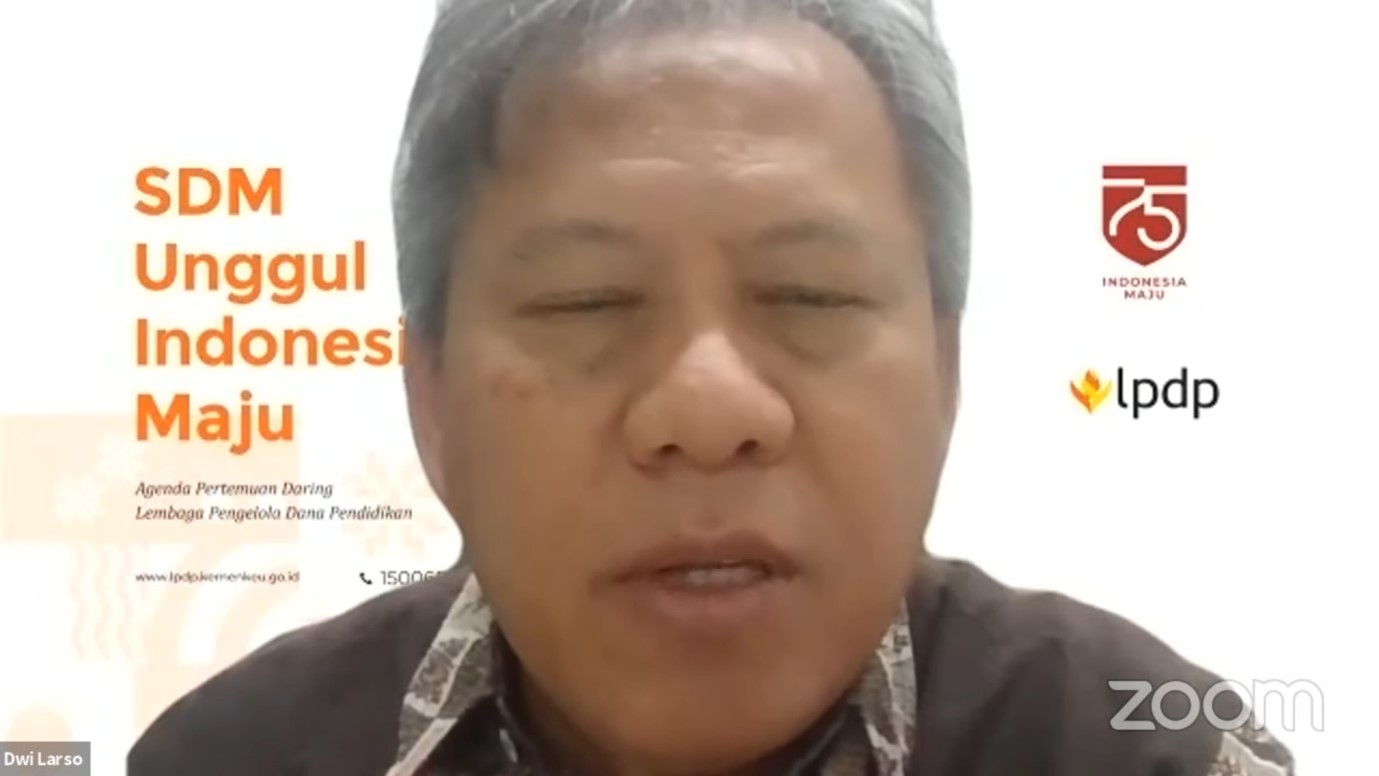Exploring the Potential of Sumedang's Pratama Taros
By Adi Permana
Editor Adi Permana

BANDUNG, itb.ac.id—As a country known for its mega biodiversity, Indonesia's locally grown products are bountiful. One of which is taro (Colocasia esculenta), a carbohydrate producer (23.78%) that can be processed as a substitute for rice. Aside from being rich in protein (1.9%), they are relatively easy to cultivate, for example in Ganeas District, Sumedang Regency.
Taros are commonly grown in Ganeas, Sumendang. The Tanjunghurip Village there is famous for its Pratama taro, a cross-yield variety between the Semir taro from Sumedang and the Silk taro from Thailand. It was developed at LIPI Biotechnology Research Center in Bogor by Made Sri Prana, Tatang Kuswara, and Maria Imelda, whose names are combined and used for the variety’s name. This variety has better productivity and is pest resistant.
In Sumedang, the Pratama taro has two varieties: SS (Sumedang Simpati) 1 and SS 2. They differ in their physical characteristics. trees of SS 1 are yellowish, with many saplings and long, smooth oval tubers that are white. On the other hand, SS2 varieties have fewer saplings that are green in color and purple after maturation. Moreover, their tubers are white with purple fibers.
Despite being recorded as local varieties at the Center for Plant Variety Protection and Agricultural Licensing of the Ministry of Agriculture, their potential has not been optimally explored. Processing derivative products from these tubers are still limited to being sold whole and boiling. Residents of Tanjunghurip Village are yet to have the necessary information to raise the selling value of Pratama taros.
To solve this problem, ITB SITH launched a PPM (Community Service and Empowerment) program that focuses on assisting farmers in Tanjunghurip Village via discussions about the taros’ supply chains and benefits. It is hoped that this program can support the farmers and the community in marketing the crop commodity and optimizing the products as part of their agro-tourism attraction.
According to Dr. Wawan Gunawan (Head of the ITB SITH PPM Team), cultivating Pratama taros takes 7-8 months. "The taros are fairly easy to maintain,” he said. “Usually, farmers plant them around January to February because of the high rainfall before harvesting them in July to August."
Although it is a newly registered variety, the Pratama taro has proven to be able to improve the farmer’s economy. Its large size as well as its savory and tender taste makes its price to be set above average - Rp10,000-Rp15,000 per kilogram for grade A harvest.
The selling value of Pratama taros can still be increased by being processed into other forms of food commodities like flour, chips, sponge cakes, cookies, brownies, milk, or flavored beverages. From the PPM program, ITB SITH shares in-depth knowledge with the local MSMEs about the ways to make food products from Pratama taros. The team organized discussion forums and directed training sessions for two days, hoping that it could help farmers and residents to maximize the prospects of Pratama taros.

On the first day, the discussion carries the theme regarding the economic development of Tanjunghurip Village as an agro-tourism area. The next day was focused on developing the by-products. "Hopefully, the diversification of these by-products can bring more opportunities for Pratama taros as a unique souvenir to realize the potential of agro-tourism villages," Dr. Wawan added.
The utilization of Pratama taros in various goods can act as leverage in accelerating the diversity of consumption from local commodities. This small step can promote the potential of plants in terms of their increased productivity and consumption value in Indonesia.
*This article has been published in the ITB Rekacipta rubric of Media Indonesia. The full article can be read at https://pengabdian.lppm.itb.ac.id
Reporter: Sekar Dianwidi Bisowarno (Bioengineering, 2019)
Translator: Ruth Nathania (Environmental Engineering, 2019)

.jpg)
.jpg)
.png)
.jpg)
.jpg)


.jpg)